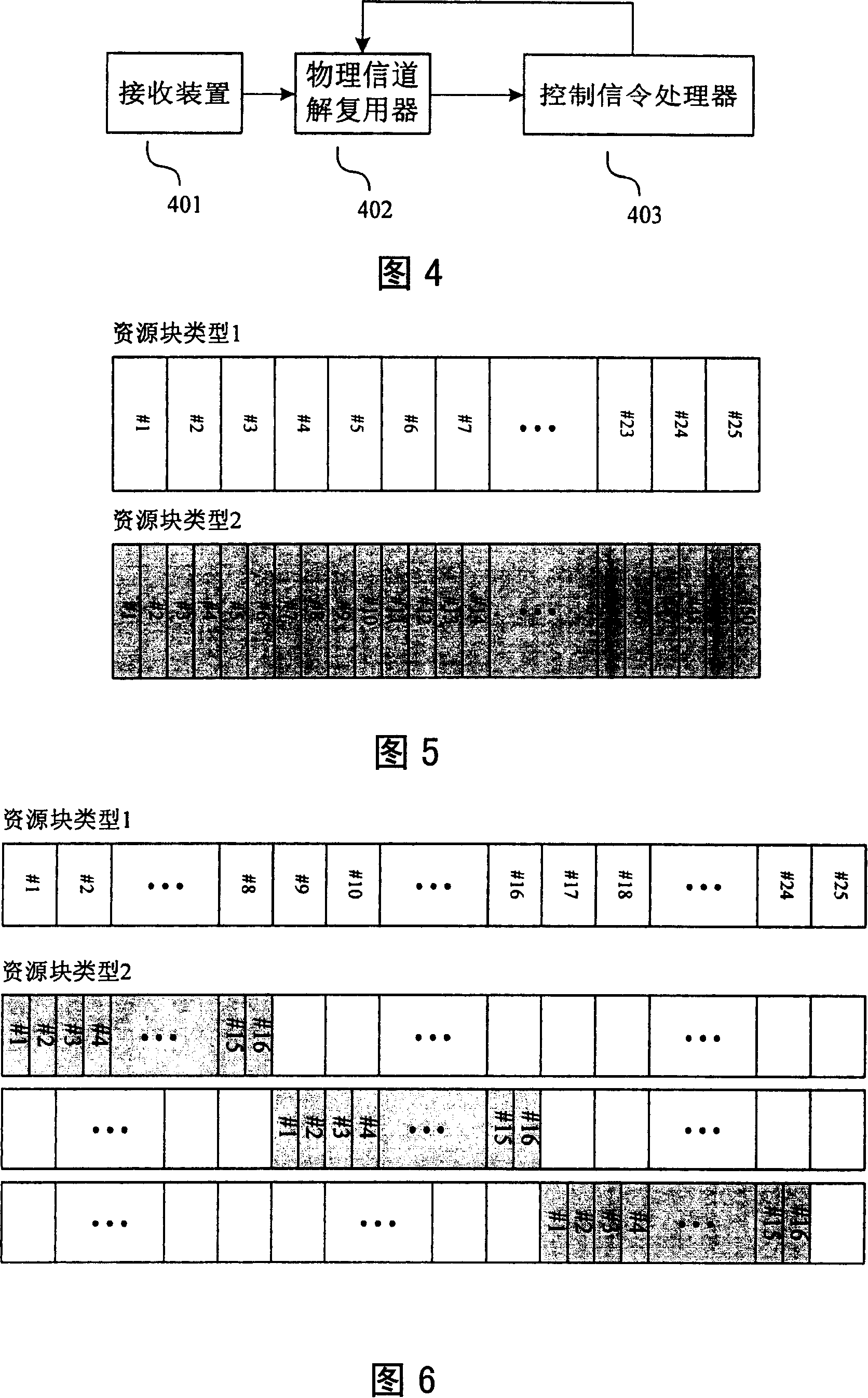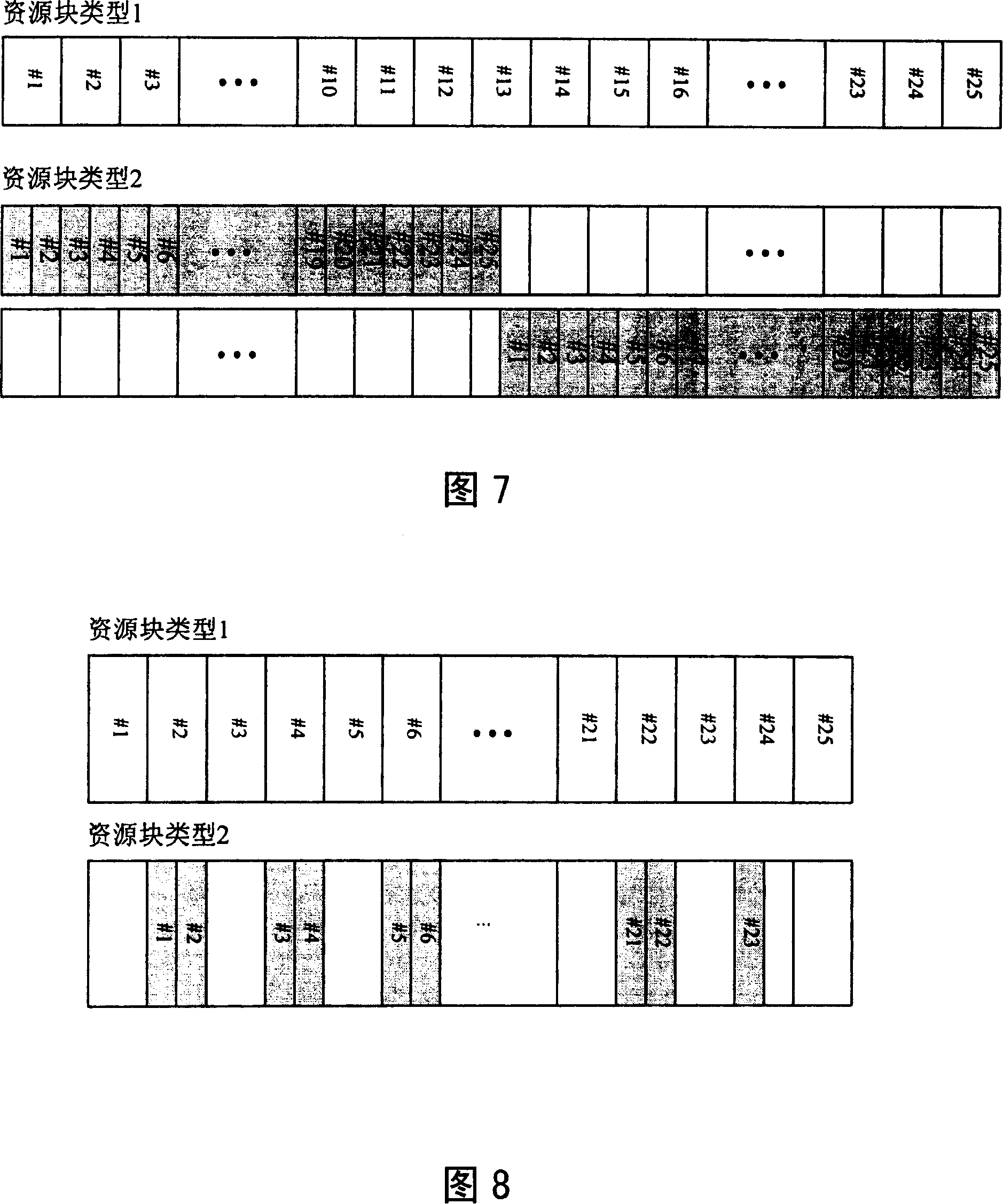Device and method for indicating signal channel resource allocation information
A technology for indicating resources and allocating information, applied in wireless communication, communication between multiple stations, electrical components, etc., can solve problems such as small effective support, increased overhead of uplink and downlink control signaling, and increased number of resource blocks , to achieve the effect of small bit overhead
- Summary
- Abstract
- Description
- Claims
- Application Information
AI Technical Summary
Problems solved by technology
Method used
Image
Examples
Embodiment
[0066] This section presents three embodiments of the invention. In order to avoid making the description of this patent too lengthy, in the following description, detailed descriptions of functions or devices that are well known to the public are omitted.
[0067] In these embodiments, the system is configured with two resource block sizes as an example. The method described here is also applicable to the system that only defines one resource block size, but when allocating resources, two resource blocks can be cascaded together for allocation. Condition. At this time, the allocation of resource blocks by the network at the allocation granularity of one resource block is equivalent to the allocation of channel resources according to resource block type 2 in the embodiment; the allocation of resource blocks by the network at the allocation granularity of two resource blocks is equivalent to the allocation of resource blocks according to the resource block in the embodiment Typ...
no. 1 example
[0069] In this embodiment, it is assumed that the system bandwidth is 10 MHz, and the system defines two types of localized resource units in the uplink direction, wherein type 1 includes 24 subcarriers, and type 2 includes 12 subcarriers. As shown in FIG. 5 , there are two types of division methods of localized resource units. Here, it is assumed that the network does not limit the number and location of type 2 resource blocks. As Table 2 lists the number of two types of resource units, the system bandwidth can be divided into 25 type 1 resource units, or can be divided into 50 type 2 resource units.
[0070] Table 2. The number of resource units under 10MHz bandwidth
[0071] The number of resource unit subcarriers
24
12
Number of resource units
25
50
[0072] In order to maintain the single-carrier nature of the SCFDMA signal, the uplink localized transmission channel can only occupy several adjacent resource units. In this way, for...
no. 2 example
[0076] In this embodiment, it is assumed that the system bandwidth is 10 MHz, and the system defines two types of localized resource units in the uplink direction, wherein type 1 includes 24 subcarriers, and type 2 includes 12 subcarriers. It is assumed here that the network restricts the number and location of type 2 resource blocks, so that the remaining codewords of the control bits indicating the channel allocation mode of type 1 resource blocks can be used to indicate the channel allocation mode of type 2 resource blocks.
[0077] Same as in Embodiment 1, the number of channel allocation modes of type 1 resource blocks is (25+1)·25 / 2=325, which requires Bits of control information indication. In addition to the 325 possibilities for resource block type 1, these 9 bits can also have 2 9 -325=187 codewords can be used to identify other resource allocation situations.
[0078] If these remaining codewords are to be used to indicate the channel allocation methods of all ty...
PUM
 Login to View More
Login to View More Abstract
Description
Claims
Application Information
 Login to View More
Login to View More - R&D
- Intellectual Property
- Life Sciences
- Materials
- Tech Scout
- Unparalleled Data Quality
- Higher Quality Content
- 60% Fewer Hallucinations
Browse by: Latest US Patents, China's latest patents, Technical Efficacy Thesaurus, Application Domain, Technology Topic, Popular Technical Reports.
© 2025 PatSnap. All rights reserved.Legal|Privacy policy|Modern Slavery Act Transparency Statement|Sitemap|About US| Contact US: help@patsnap.com



